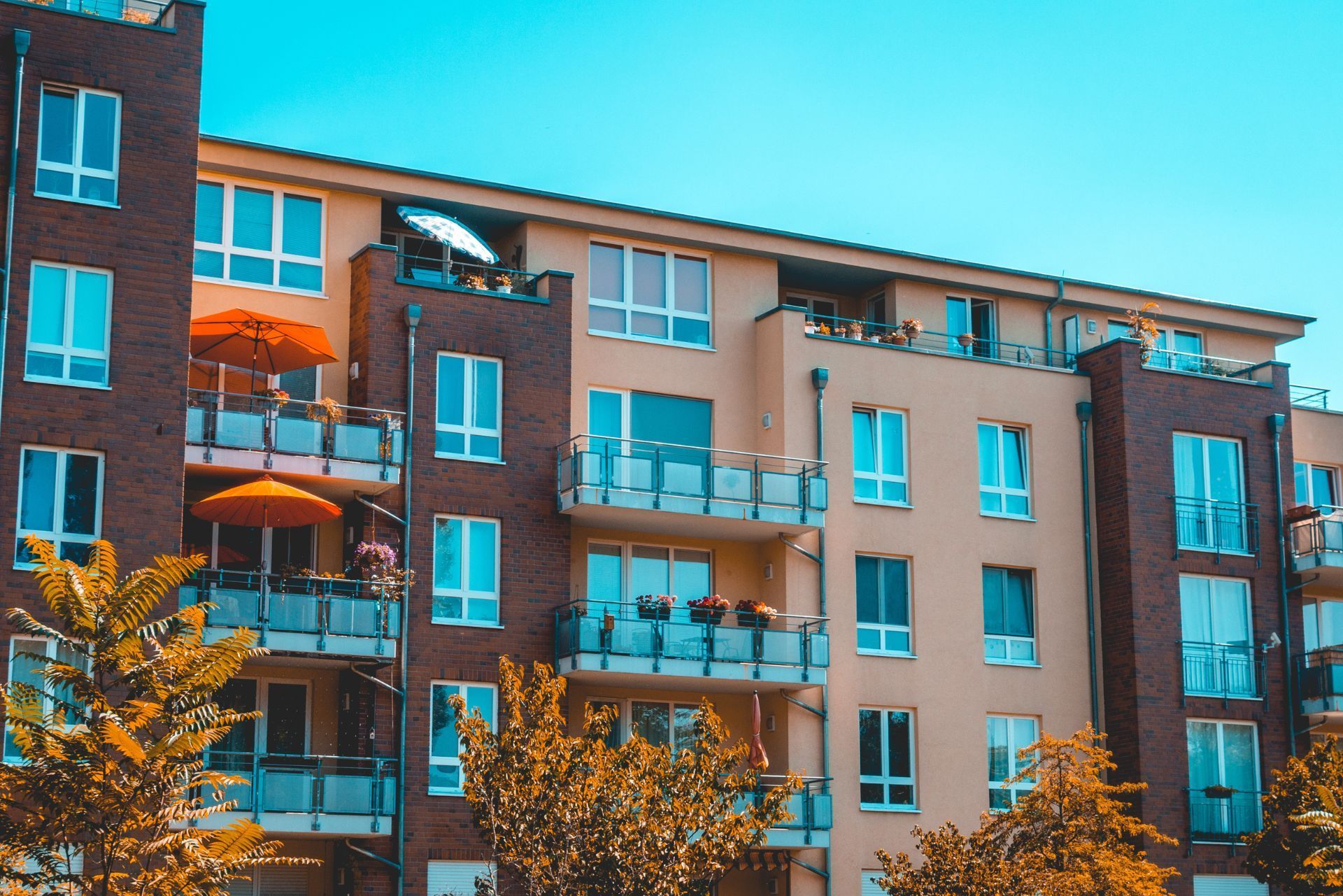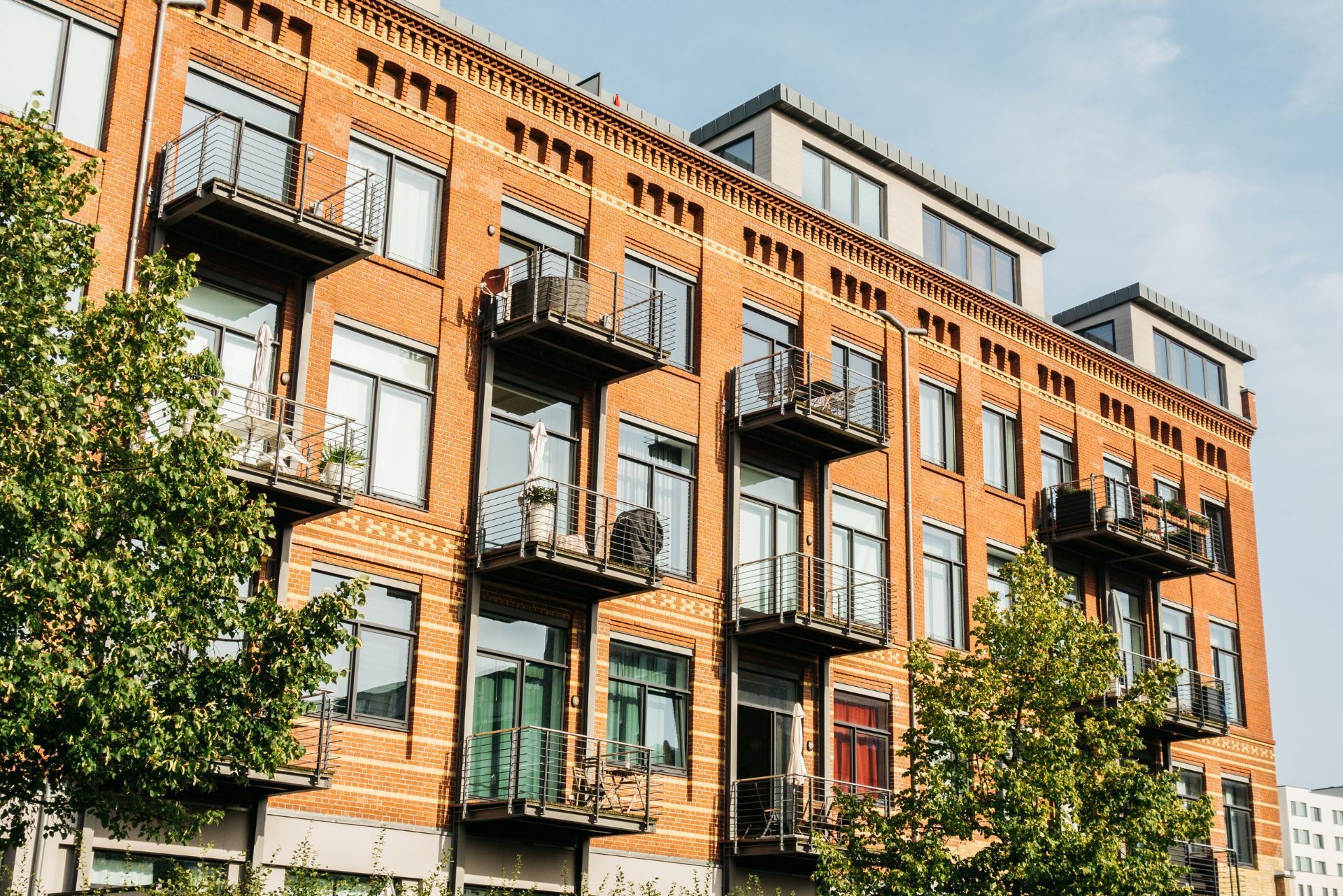Top 3 Recommended Policies

Investing in Class B multifamily apartments in Georgia presents unique opportunities and challenges, especially when it comes to securing the right insurance coverage. With the state's multifamily market evolving rapidly amidst shifting demand and regulatory landscapes, understanding the nuances of insurance for these properties is crucial for landlords, property managers, and investors alike.
Georgia’s multifamily sector is currently navigating a complex environment marked by rising insurance costs, legislative changes, and market dynamics that influence risk exposure and coverage needs. This article delves into everything you need to know about Class B multifamily apartment insurance in Georgia, from market trends and regulatory impacts to insurance challenges and strategies for effective risk management.
For a detailed overview of the multifamily market trends in Atlanta, which heavily influence insurance considerations, the Matthews Real Estate Investment Services Q2 2025 report offers valuable insights.
Understanding Class B Multifamily Apartments in Georgia
Class B multifamily properties typically represent a middle tier in the apartment market. These buildings are usually older than Class A properties, often built 10 to 20 years ago, and while they may lack some of the modern amenities found in newer developments, they still offer solid rental income potential. In Georgia, particularly in Atlanta, Class B apartments serve a significant segment of renters seeking affordable yet quality housing options. These properties often feature spacious layouts and established neighborhoods, making them attractive to families and young professionals alike. The blend of affordability and decent living conditions creates a steady demand, particularly in urban settings where housing prices continue to rise.
Unlike Class A properties, Class B apartments often require more maintenance and may face higher vacancy risks, especially during market downturns. According to the 2024 Multifamily Market Report by Matthews Real Estate Investment Services, Atlanta’s market is experiencing a divergence between high-end and lower-end properties, with Class B assets facing challenges related to vacancies and declining rents. This trend can lead to increased competition among landlords to attract tenants, often resulting in incentives such as reduced rents or upgraded amenities. Furthermore, the demographic shifts in Atlanta, with a growing number of millennials and Gen Z renters, are influencing the demand for these properties, as this cohort often prioritizes affordability and location over luxury features.
These market conditions directly impact insurance considerations, as insurers assess risk based on property condition, tenant profiles, and market stability. Understanding the characteristics of Class B properties is the first step in tailoring insurance policies that adequately protect investments without unnecessary cost burdens. For property owners, maintaining a proactive approach to property management can mitigate some of the risks associated with Class B apartments. Regular maintenance, tenant engagement, and community-building initiatives can enhance tenant satisfaction and retention, ultimately contributing to a more stable income stream. Additionally, as the market evolves, property owners may consider strategic renovations to improve the appeal of their units, thereby increasing their competitiveness in a challenging rental landscape.

Current Market Dynamics Affecting Insurance in Georgia
The multifamily market in Georgia is currently experiencing a shift in demand dynamics. In Q2 2025, Atlanta’s multifamily market recorded a net absorption of 6,900 units, exceeding new deliveries of 4,600 units, signaling a tightening rental market. This trend can influence insurance underwriting as increased occupancy often correlates with higher liability risks and claims frequency.
However, vacancy rates have fluctuated in recent years. For instance, in Q1 2023, Atlanta’s multifamily vacancy rate increased by 60 basis points to 5.1%, accompanied by a 1.2% decrease in asking rents to $1,567 per month, according to Northmarq’s market insights. These fluctuations can affect the risk profile of Class B properties, as higher vacancies may reduce income but also potentially lower wear and tear, while declining rents might constrain budgets for property upkeep and insurance premiums.
Moreover, the Apartment Rental industry in Georgia is projected to grow to $7.3 billion by 2024, with over 21,000 establishments and more than 33,000 employees, highlighting the sector’s economic significance and the scale of insurance needs across multifamily assets (IBISWorld).
As the multifamily sector evolves, property owners are increasingly focused on enhancing their risk management strategies. This includes investing in advanced security measures, such as surveillance systems and smart technology, which can mitigate risks associated with theft and vandalism. Additionally, the rise of tenant screening services has become more prevalent, allowing landlords to better assess potential renters and reduce the likelihood of problematic tenancies that could lead to insurance claims.
Furthermore, the impact of economic factors, such as rising interest rates and inflation, cannot be overlooked. These elements not only affect the cost of borrowing for property developers but also influence operational costs for existing property owners. As expenses rise, landlords may seek to cut costs, potentially impacting maintenance and insurance coverage. Insurers, in turn, must adapt their policies to reflect these changing economic conditions, ensuring that coverage remains adequate while also being competitively priced to attract and retain clients in a shifting market landscape.
Challenges in Securing Liability Coverage for Class B Properties
One of the most pressing challenges for owners of Class B multifamily apartments in Georgia is obtaining affordable and comprehensive liability insurance. Corey Alison, EVP at Amwins, emphasizes that Georgia ranks among the most difficult states for securing liability coverage on multifamily properties due to large verdicts stemming from assault and battery (A&B) incidents and other liability claims (Insurance Business America).
These large verdicts drive up insurance premiums and sometimes lead insurers to limit coverage or impose stricter underwriting criteria. For Class B properties, which may have older infrastructure and a more diverse tenant base, this risk is particularly pronounced. Property owners must be proactive in implementing safety measures, tenant screening, and risk mitigation strategies to make their properties more insurable and potentially reduce premiums.
Additionally, the overall rise in property insurance costs—up 26% on average over the past year according to GlobeSt.com—adds financial pressure on multifamily operators. This increase affects investment returns and can influence decisions on property improvements and tenant services. As a result, owners may find themselves in a difficult position, needing to balance the costs of insurance with the necessity of maintaining and upgrading their properties to attract and retain tenants.
Moreover, the competitive landscape of the multifamily housing market in Georgia further complicates these challenges. With a growing population and a demand for affordable housing, property owners are under pressure to keep rents competitive while managing rising operational costs. This often leads to a tightening of budgets for essential services and maintenance, which can inadvertently contribute to a cycle of neglect that heightens liability risks. Additionally, the increasing prevalence of litigation in the real estate sector means that property owners must remain vigilant and well-informed about legal trends and insurance options to navigate this challenging environment effectively.
In light of these issues, many property owners are exploring alternative risk management strategies, such as forming cooperatives to pool resources for insurance purchasing or investing in technology that enhances property safety and tenant engagement. These proactive measures not only help mitigate risks but can also create a more appealing living environment for tenants, thereby improving occupancy rates and fostering community relations. As the landscape continues to evolve, staying ahead of these challenges will be crucial for the sustainability and profitability of Class B multifamily properties in Georgia.
Regulatory Environment and Its Impact on Insurance
Georgia’s regulatory landscape is another critical factor influencing multifamily apartment insurance. Recent legislative efforts in 2024 have focused on enhancing tenant protections, including proposals to expand requirements for written leases and enforce uniform habitability standards (MLZ).
While these measures aim to improve tenant rights and living conditions, they also introduce new compliance costs and potential liabilities for property owners. Insurance carriers take regulatory compliance into account when underwriting policies, as non-compliance can lead to increased claims and legal exposure.
Furthermore, a study by the Georgia Public Policy Foundation found that nearly a quarter (23.4%) of the cost of multifamily housing in Georgia can be attributed to federal, state, and local regulations (Georgia Public Policy Foundation). This regulatory burden indirectly affects insurance costs by increasing operational expenses and risk profiles.
In addition to these financial implications, the evolving regulatory framework also necessitates that property owners stay informed and adaptable. The introduction of new laws often requires landlords to invest in training and resources to ensure compliance, which can further strain budgets. For instance, the requirement for standardized lease agreements may compel property managers to consult legal experts to draft documents that meet the new criteria, thereby incurring additional costs. Moreover, the emphasis on habitability standards can lead to more frequent inspections and maintenance obligations, which can disrupt operations and impact tenant satisfaction.
Moreover, the regulatory environment can also influence the competitive landscape of the insurance market itself. As insurers assess the risks associated with multifamily properties in light of new regulations, they may adjust their coverage options and pricing strategies. This could lead to a more segmented market where only certain types of properties or owners who can demonstrate compliance receive favorable rates. Consequently, property owners who proactively engage with these regulations may find themselves at a competitive advantage, potentially lowering their insurance costs while attracting more tenants who prioritize safety and compliance in their housing choices.
Key Insurance Coverage Components for Class B Multifamily Apartments
When insuring Class B multifamily apartments in Georgia, it is essential to understand the core components of coverage that protect both the property and the owner’s financial interests. These typically include:
- Property Insurance: Covers damage to the physical structure caused by fire, storms, vandalism, and other perils.
- Liability Insurance: Protects against claims arising from bodily injury or property damage to tenants or visitors on the premises.
- Loss of Income Insurance: Provides compensation for rental income lost due to property damage that renders units uninhabitable.
- Umbrella Policies: Offers additional liability coverage beyond standard policy limits, which is particularly valuable in states like Georgia with high verdict risks.
Given the increased liability challenges in Georgia, many owners of Class B properties opt for enhanced liability limits and risk management services offered by insurers. Tailoring policies to the specific risks associated with older buildings and tenant demographics is vital for comprehensive protection.
Additionally, it is important to consider the unique features of Class B multifamily apartments, which often include amenities that can attract a diverse tenant base. Coverage for common areas such as pools, gyms, and community rooms is crucial, as these spaces can be hotspots for accidents and liability claims. Furthermore, ensuring that the insurance policy includes provisions for tenant-related issues, such as disputes or evictions, can provide an added layer of security for property owners navigating the complexities of tenant management.
Moreover, as environmental concerns continue to rise, many insurers are now offering policies that address risks associated with natural disasters, such as floods and earthquakes, which can be particularly relevant in certain parts of Georgia. Owners may also want to explore options for coverage that includes environmental liability, especially if their properties are located near bodies of water or in areas prone to severe weather events. This proactive approach not only safeguards the physical asset but also enhances the overall value and marketability of the property in an increasingly competitive rental landscape.

Strategies to Manage Insurance Costs and Risks
While insurance premiums have risen sharply, there are several strategies that owners and managers of Class B multifamily apartments can employ to manage costs and reduce risk exposure:
- Implement Rigorous Safety Protocols: Regular maintenance, security enhancements, and tenant education can reduce incidents that lead to liability claims.
- Engage in Proactive Tenant Screening: Thorough background checks help minimize the likelihood of problematic tenants who may increase liability risks.
- Maintain Compliance with Regulations: Staying ahead of legislative changes and ensuring habitability standards can prevent costly legal disputes and insurance claims.
- Work with Experienced Insurance Brokers: Brokers familiar with Georgia’s multifamily market can negotiate better terms and identify coverage gaps.
These approaches not only improve the insurability of Class B properties but also contribute to better tenant retention and overall asset performance. Additionally, investing in technology can further streamline operations and enhance safety measures. For instance, implementing smart home technologies can provide tenants with increased security features, such as remote monitoring and alarm systems, which not only deter crime but also lower the likelihood of insurance claims related to theft or vandalism.
Furthermore, fostering a strong community culture within the property can lead to greater tenant satisfaction and lower turnover rates. Organizing regular community events or providing amenities that encourage social interaction can create a sense of belonging among tenants. This not only enhances the living experience but also promotes a collective responsibility towards property care, reducing the chances of damage or neglect that could result in insurance claims.
Conclusion: Navigating the Complex Landscape of Georgia Multifamily Insurance
Class B multifamily apartment insurance in Georgia is shaped by a confluence of market trends, regulatory shifts, and rising liability risks. With Atlanta’s multifamily market showing both growth opportunities and challenges—such as fluctuating vacancy rates and divergent property class performance—owners must be vigilant in managing insurance needs.
The state’s reputation for high liability verdicts and increasing property insurance costs requires a strategic approach to coverage selection and risk mitigation. Staying informed about legislative developments and market conditions, as well as partnering with knowledgeable insurance professionals, can help property owners safeguard their investments effectively.
For those interested in the broader economic impact and ongoing market analysis, the
IBISWorld report on Georgia’s apartment rental industry offers comprehensive data and projections that contextualize insurance considerations within the state’s multifamily housing ecosystem.
Contact Us


